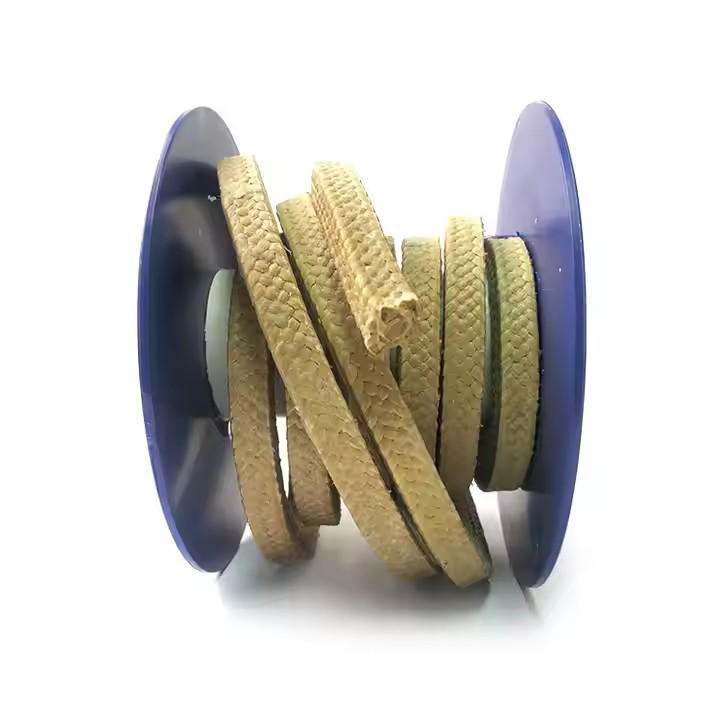Aramid packing is a high-performance sealing material. It is widely used in many industries. Its unique properties and wide applications make it vital to modern industry. This article will detail the composition, uses, and correct methods for aramid packing. It aims to give readers a solid understanding of the science behind it.

Introduction to Aramid Packing Materials
Aramid packing is a sealing material. It is mainly aramid fibers, woven by a special process. Researchers know aramid fibers for their excellent properties. They are strong, stiff, and resist high heat and chemical corrosion. Their strength is 5-6 times that of steel wire, and their modulus is 2-3 times that of steel wire or glass fiber. They can keep their integrity at up to 280°C. They won’t decompose or melt. Also, aramid fibers have good wear resistance and excellent chemical resistance. They have high sealing performance, too. The tight weave of the fibers has small gaps. This prevents medium leakage.
Sometimes, aramid packing also contains carbon fibers, forming aramid-carbon-fiber packing. This hybrid material combines two things. It has aramid fibers’ wear resistance. It also has carbon fibers’ high-temperature resistance. This further enhances its performance. Aramid-carbon-fiber packing is strong. It’s wear- and heat-resistant. It also self-lubricates. It is best for sealing in rotating or reciprocating mechanisms. It works with corrosive, high-temperature, high-pressure, particle-laden fluids at high speeds.
The Uses of Aramid Packing
Aramid packing is popular in many industries because it performs well. You can find it in petrochemicals, power, pharmaceuticals, papermaking, and food. The petrochemical industry often uses aramid packing to seal pumps, valves, and reactors. The power industry uses it for sealing the shafts of steam turbines and generators. Also, aramid packing suits dynamic seals with solid particle media. This includes equipment that handles abrasive fluids, like superheated steam, solvents, liquefied gas, and syrup.
The application range of aramid carbon fiber packing is even broader. It is suitable for sealing in aviation, aerospace, chemical, petroleum, and power industries. It also seals equipment handling almost all fluids, including acids, strong corrosives, hot oil, solvents, and boiler feed water. Its great performance makes it ideal for centrifugal pumps, agitators, and valves. These include ball, gate, globe, and plunger valves. It also works well in oil-powered drilling tools.
The Usage Method of Aramid Packing
When you use aramid packing, you must follow certain steps and precautions. Before installing, confirm the installation location. Check the sealing surface size. Also, match the standard model, size, and quantity of the packing. At the same time, the pipeline must be clean. It must have no damage, protrusions, or depressions. During installation, measure the packing size per the manufacturer’s drawings. Prepare the sealing surface, then apply some grease to it. This will let the packing slide smoothly. First, put the packing on the sealing surface. Next, install it to the pre-position. Then, take interference photos as required by the fastening frame drawings. Be sure to record the data. Finally, tighten the packing. Adjust the seals to cut leaks.
During use, regularly inspect the packing for wear. Replace any severely worn packing to ensure the equipment operates safely. At the same time, keep the pipeline and sealing surface clean. Impurities and dirt can damage the packing.
 Hongwo Braided Packing
Hongwo Braided Packing


WhatsApp
Scan the QR Code to start a WhatsApp chat with us.